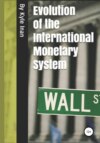Kitabı oku: «Evolution of the International Monetary System», sayfa 3
In addition, the Bank of England’s persistent agenda to uphold its dominant status as the central monetary authority during the era of the classical gold standard was further advanced by its extensive monetary operations that encouraged global trends such as; increasing short-term capital mobility and motivating central banks to push domestic rates downwards with the inflow of gold into these banks. Despite the Bank of England’s relatively scarce gold reserve, central banks had to continue to yield to the pressures exerted by it as they had a limited ability to effectively change their own monetary conditions, much less the international order itself. “On this showing, the Bank of England set the level of world interest rates, which accounts for the fact that national interest rates moved up and down together, while other countries had power only over a narrow differential between the domestic level and the world rate.” (Kindleberger, 1993, pg. 73)
In response to the policies enforced by the Bank of England, insolvent central banks that suffered a significant loss in their gold reserves resorted to their domestic asset holdings so that they could push interest rates upwards, which would then attract short-term capital and limit the outflow of fresh capital. In turn, this reactionary policy would strengthen their domestic economies.
In addition, under the gold standard regime, sterling bills were the only worldwide-accepted currencies that also simultaneously retained the privilege of substituting for real money in other European countries.
While the Bank of England, as the central decision-making monetary authority of the classical gold standard era, had unlimited access to international markets. This allowed it to arbitrarily determine national interest rates of other countries as well. Therefore, it would not be a far-fetched argument to claim that the classical gold standard was after all a system based completely on the British sterling.
With the outbreak of WWI, governments and central banks around the world were forcefully confronted with a need to finance high levels of military expenditures with an extremely limited source of tax revenue. Driven by the need to out compete each other in the race for war, many belligerent countries have gradually started abandoning the gold standard to issue un-backed paper currencies (which then would cause massive hyperinflation levels in these countries) while the Bank of England had temporarily suspended gold convertibility which meant that it had abolished the gold standard until after the war.
The Inter-war Period (1918-1939)
At the onset of WWI, most industrialized nations of Europe have started issuing fiat currencies (un-backed paper) in an effort to fuel the war machine. This was a period in which precious metals such as “gold” and “silver” had become a critical resource for the procurement of war material. As a consequence of the rising value of gold and silver, governments have pursued protectionist policies to prohibit the export of such precious metals while continuing to issue fiat currencies without any value.
The arbitrary creation of these currencies to support war efforts at different rates has caused wide variations in the exchange rates among European countries to the extent that some had faced severe hyperinflation in their national economies. Some of the countries like; Germany, Hungary, Austria, and Poland of which hyperinflation had taken a very heavy toll on, have made several attempts to re-establish gold convertibility to fix the fundamental disequilibria in their balance of payments. However, the British Sterling, which had been providing the strongest foundation for the harmonization of economic policies prior to the outbreak of WWI, was no longer enjoying its hey day.
Especially after the decline of the British industrial and commercial hegemony, countries that were previously renowned as international creditors have started losing their elevated positions after becoming heavily dependent on capital imports from the United States in exchange for maintaining a stable balance of payments equilibrium. After a while, it became evident that pre-war exchange rates could not be restored.
During the inter-war period, national price levels and interest rates rose to unprecedented proportions as each developing country, including the ones in the “most-industrialized” periphery (i.e. Germany, Japan), experienced both inflation and deflation in their domestic economies. The dissolution of Europe in the aftermath of WWI disrupted the orderly process of the gold standard and led to a period of persistent economic uncertainty. The Bank of England ceased issuing loans, as governments around the world, particularly in Europe, defaulted on their loans and their debt repayments for war reparations. Each country in Europe gradually started abandoning the gold standard. In the aftermath of WWI, strategic economic alliances that were made prior to the war all broke down with the possible advent of an even more destructive war.
As a result of this scenario, most of the belligerent countries have found their remedy in the procurement of arms and weapons by printing out of massive amounts of money to finance their military expenditures and to support war causes, even though almost all of them have declared moratorium on their payments post-WWI. One example of such a case was Germany, as the industrial heartland of Europe suffered one of the most severe hyperinflations in world history with highest military spending.
In the ensuing political conflict after WWI, the structure of the world economy, including those of financial centers were also profoundly devastated. Countries that engaged in war started to yearn increasingly for the pre-war parities (as goods and services had become overvalued and undervalued) and for the restoration of the gold standard.
The decline in the Bank of England's wealth as the world's leading financial center followed by persistent stagflation in Britain failed to inspire confidence in the world markets. As a result of the British Central Bank’s ineffectiveness in carrying out its obligations and because of her failure of commitment to maintain a stable currency value, foreign holders of British pounds converted their pound holdings into U.S. dollars. However, between the 1939-1942 period, Britain had already depleted more than half of its gold reserves after purchasing ammunitions from the U.S. In short, there was not enough money supply to resume the gold-standard system as the war had led to the complete depletion of gold stocks in Britain.
On the other hand, the U.S. economy was also suffering from a similar predicament during the inter-war period. Governments around world that were operating on the gold standard were being limited from expanding their money supplies and thereby from lowering their interest rates. The imposition of this rule had pushed some countries to break the rule and secretly print out more money to tackle deflation in their economies. However, to show its commitment to the gold standard, the U.S. Federal Reserve did not pursue an expansionary monetary policy and kept interest rates at relatively high levels during the war periods. But the gold stocks of the Federal Reserve were also rapidly contracting and were causing a sudden devaluation of the U.S. dollar “In the U.S., the Federal Reserve was required by law to have 40% gold backing of its Federal Reserve demand notes, and thus, could not expand the money supply beyond what was allowed by the gold reserves held in their vaults.”
(Edward C. Simmons, Elasticity of the Federal Reserve Note, http://www.jstor.org/stable/1807996)
The maintaining of high interest rates would translate directly into a deflationary pressure on the dollar, which then had caused a significant reduction in investment in U.S. banks overtime. Because of this scenario, both investors and depositors have started withdrawing their funds from U.S. banks after the emergence of a widespread speculative fear that the value of the U.S. dollar would decline.
In spite of some burgeoning international economic corporation in the period preceding 1930's, there was much considerable turbulence in the world markets. Trade barriers were mainly imposed and the widespread repudiations of domestic and international debts were accompanied by uncertainty in economic policies. Governments' efforts to improve the effects of foreign exchange markets proved problematic and incessant deflation led to increased rates of unemployment as the stock markets around the world have crashed. This period in history was called the “Great Depression.”
During the world-wide depression, many countries that were agitated by the suspicious arrangements made for the exchange of unreliable currencies assumed an uncooperative behavior. It was precisely during this period when the need for the creation of a monetary order that would govern international monetary relations among independent states became evident. This new international monetary order was called the “Bretton Woods System.”
The Bretton Woods System (1944-1971)
“To suppose that there exists some smoothly functioning automatic mechanism of adjustment which preserves equilibrium if we only trust methods of laissez-faire is a doctrinaire delusion which disregards the lessons of historical experience without having behind it the support of sound theory.” (J.M. Keynes, 1980)
The quarter-century following WWII, has clearly demonstrated the fundamental disadvantages of the fully-flexible exchange rates. By 1944, many countries have extracted important lessons from the tragic experiences of the Great Depression and made important strides to avoid repeating the same mistakes of the past.
One of these intended critical measures was to put into practice an international monetary order that would regulate and oversee the international transactions of independent states. Although many countries had divergent views on the macro-economic management of their national policies, almost all of them agreed upon the idea of establishing an international monetary system that would regulate the international economy primarily through the two main principles of capitalism; “through private ownership” and “through adjustable market mechanisms.” (Two examples of this particular case were France and the U.S., where the French government sought greater planning and intervention in the markets, whereas the American government favored a relatively limited level of intervention.)










